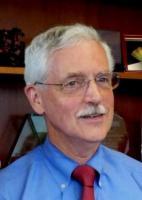January - February 2015
I write this letter during a fierce New England blizzard to provide a brief update on ANA activities. As you know, this is an exciting time to be in academic neurology. Prospects for devising meaningful new treatments for neurological disorders have never been better. Promising examples of new approaches to discovery and innovative therapeutic interventions include stem cell technologies that produce virtually all types of neural cells with exact genotypes of donor patients; opticogenetics; extraordinary technologies for gene editing, soon to be deliverable to the mammalian CNS; an almost unbelievable range of applications of deep brain stimulation; new applications of oligo-mediated gene correction and gene silencing; and human trials of vector-mediate gene therapy. The ANA is committed to doing all it can to see that these transformative advances are applied to neurological illnesses.
With this commitment in mind, the American Neurological Association Scientific Program Advisory Committee (SPAC) and the Board of Directors recently concluded productive meetings in Dallas. Under the continuing leadership of Dr. Sam Pleasure, the SPAC began preparations for the ANA 140th Annual Meeting in Chicago, IL on September 27-29, 2015. The committee has planned an exciting slate of symposia topics including stroke therapeutics, prion biology, axonal degeneration, cognitive plasticity and multiple sclerosis. In the coming months there will be much more on these topics, as well as on the interactive lunch workshops and the special interest groups.
The board conducted a detailed review of ANA operations and priorities and identified six priorities for the coming year. Foremost among our priorities is continuing the current range of activities to facilitate career development for academic neurologists.
Our second priority is to determine how the ANA might play a role in improving federal funding for neuroscience research. We have engaged a Washington legislative consultant group, Van Scoyoc Associates, to define potential programs the ANA may support toward this end. In the next month, we will be conferring with several individuals in Washington about options both to enhance funding in real terms and to centralize decisions about fund allocation, thus avoiding duplication and waste. By summer 2015, we plan to enumerate potential options for the ANA. As another component of this project, we will request help from ANA members in a study we are assembling to describe the present and future burden of neurological illness.
A third priority is to continue efforts to bring the best neuroscience and neuroscientists to the ANA, consonant with our mission to understand and treat seemingly intractable neurological disorders. The task here is to convey both the importance and the excitement of concepts that are central in neurological diseases. In a more specific sense, our goal is to attract more clinical scientists and basic neurobiologists to join the ANA to engage in these discussions. As one step in this direction, we have been pleased to work with Dr. Roger Rosenberg and Dr. Clif Saper to develop a new symposium co-sponsored by Annals of Neurology and JAMA, focusing on issues of intense --and sometimes polemical-- interest. This symposium will be held at the start of the regular ANA meeting, and will be readily accessible to ANA members and the public.
As we have discussed previously in these letters, another priority for the next six months is to digitize the ANA archive and move it to an appropriate new facility for long-term storage and hopefully occasional exhibits. The intention is to make this remarkable resource widely available both online and in an actual archive. A fifth priority that will merit attention in the near term is our budget. The ANA is fortunate to have adequate financial reserves for our present operations, but our annual expenses now exceed our income. In my view, we must address this through a process of closer budgetary scrutiny, carefully reassessing our expenses and, as always, considering options for improving revenue. Finally, we plan to optimize use of our new website as a major portal for ANA activities, a forum for breaking neuroscience news of interest to our membership, and a library for ANA materials of interest (e.g. videos of symposia, our oral history documents, and the ANA archives).
Neurology and neuroscience have never been more exciting. Working with you, the ANA plans to stand in the forefront of the rapid advances in these fields.
Sincerely,

Robert H. Brown, Jr., D.Phil., M.D.
University of Massachusetts Medical School
President, American Neurological Association

